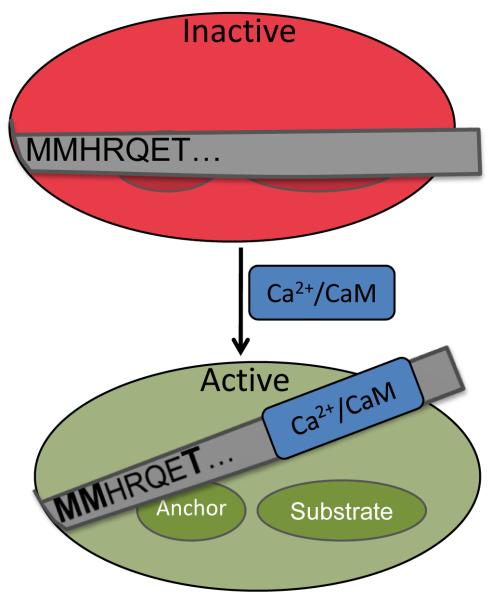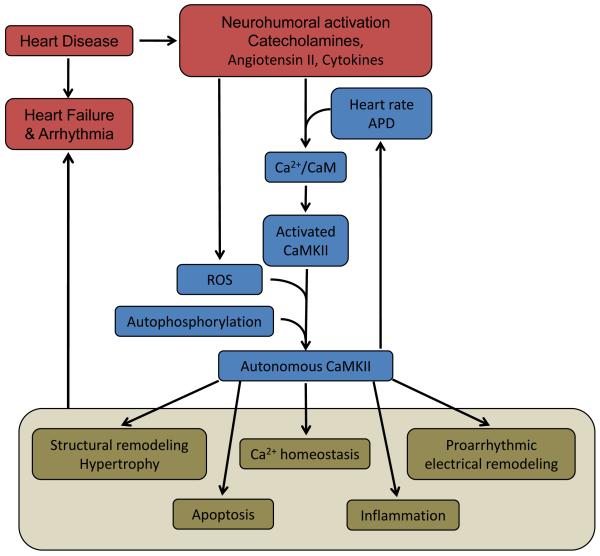Figure 1.
Ca2+/calmodulin-dependent protein kinase II (CaMKII) activation is potentiated by autophosphorylation and oxidation to effect key processes in the evolution of heart failure. (A) Ca2+/CaM binds and displaces the kinase inhibitory domain to activate the kinase, exposing its substrate binding site (Substrate) to promotes catalysis as well as a site (Anchor) by which it tethers to some proteins. Kinase activity is made autonomous of Ca2+ signaling and thus potentiated by either oxidation of two methionine residues (Met281Met282) or a critical threonine (Thr287) that may serve as a ‘wedge’ to keep the inhibitory ‘gate’ open. (B) Hypertension and myocardial infarction (MI) initiate neurohumoral signaling that excessively activate CaMKII and phosphorylation of key substrates that elicit structural and electrical remodeling and apoptosis that promote transition to symptomatic heart failure, arrhythmia and sudden death. (Modified from [3])


